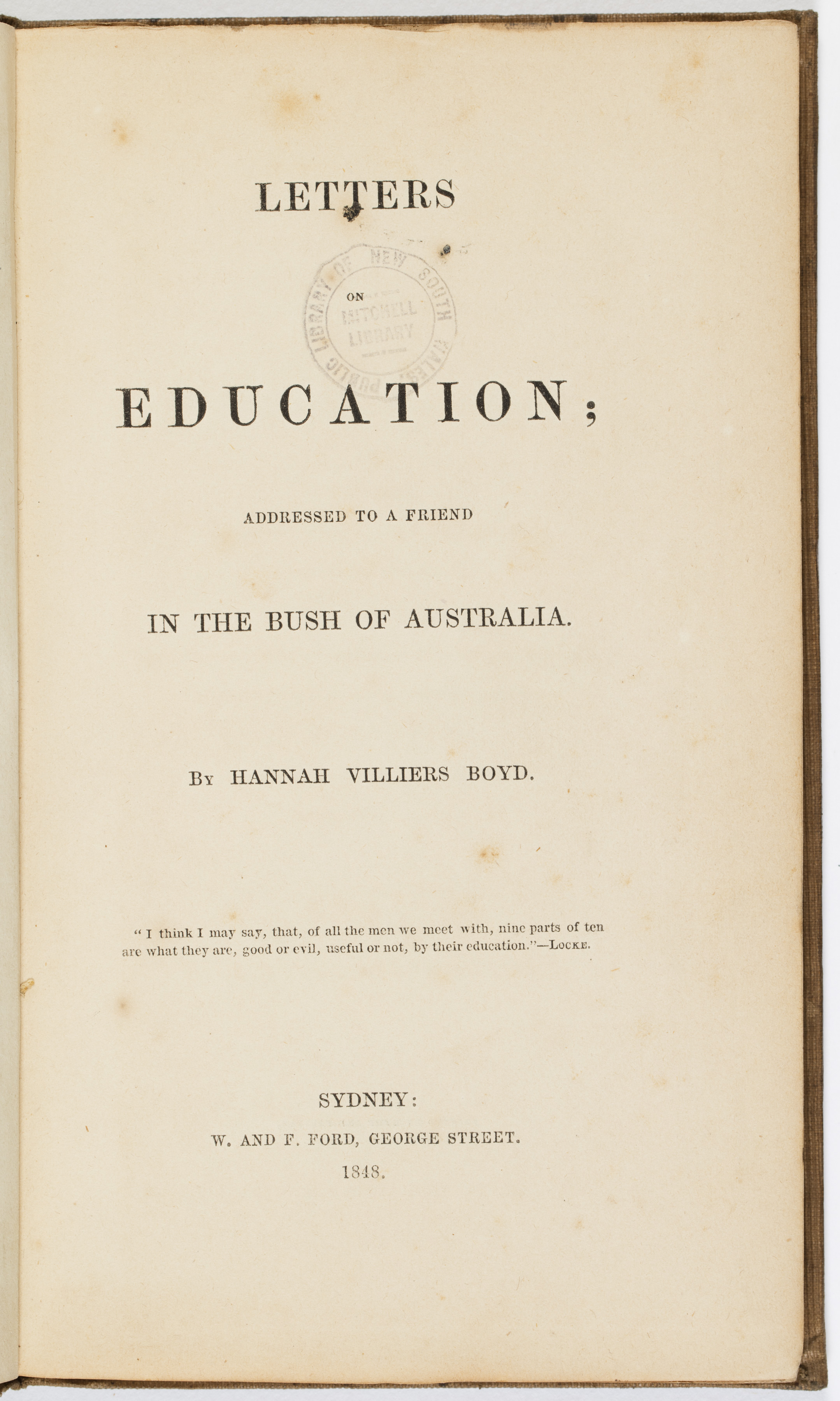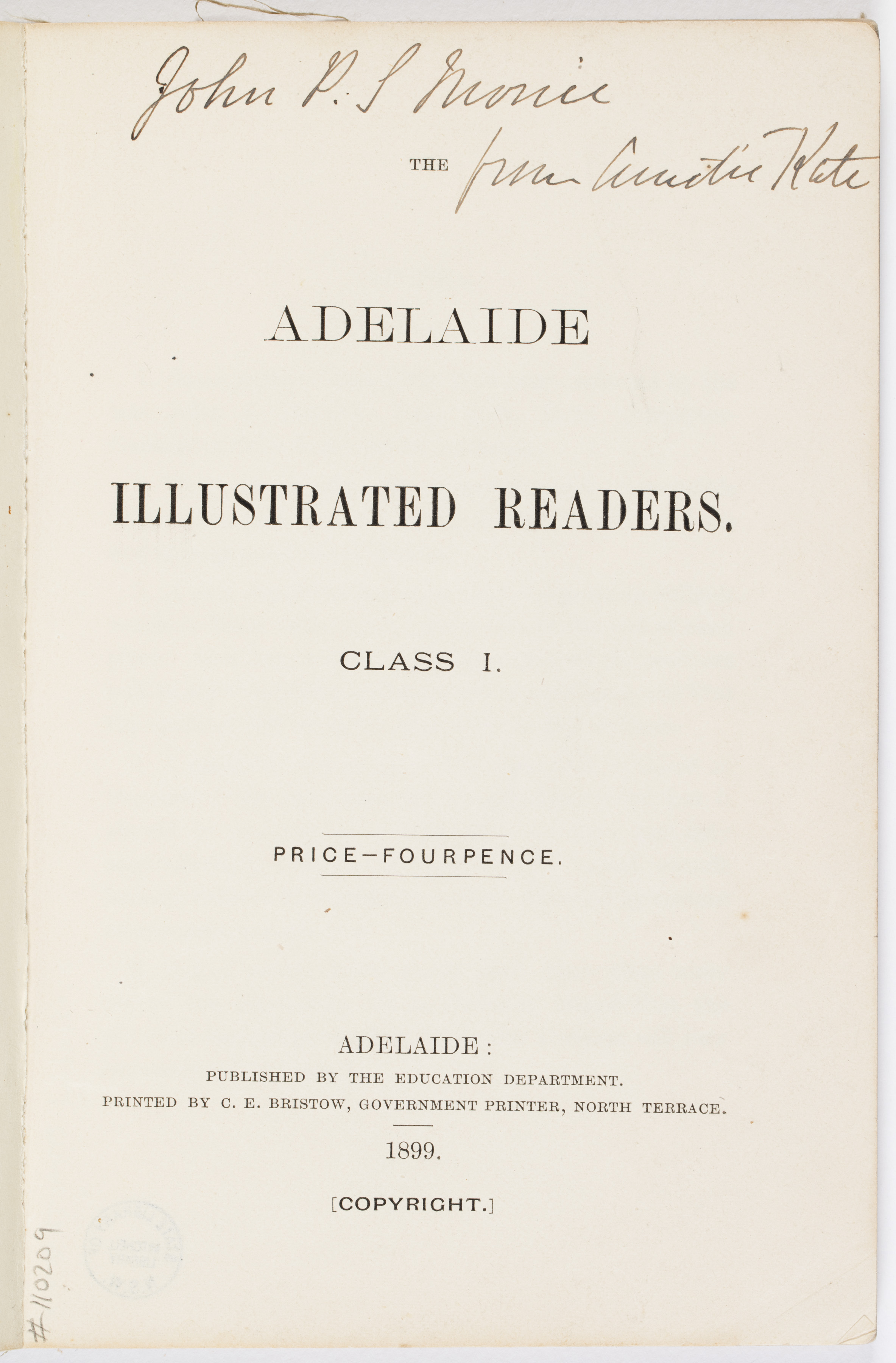A mother’s offering
A mother’s offering
Charlotte Barton (1797-1867) is now recognised as Australia’s first author for children. Her moralistic book, A Mother’s Offering to Her Children, was printed in Sydney by The Sydney Gazette and distributed by the publisher and bookseller, G. W. Evans, in 1841. It was originally published anonymously by ‘A Lady Long Resident in New South Wales.’ Like several of the early titles in the Thyne Reid Trust Collection, the book is written in the style of a moral tract and it comprises a series of dialogues between a mother and her four children living in an isolated rural Australian setting.
Barton lived and experienced bush life in Australia with her own children during their time in an isolated outstation in New South Wales and the book draws on her experiences of tutoring her children. It is also an illustration of Barton’s interest in natural science. Lessons in geology and anthropology are interspersed with tales of shipwreck and barbarism. The Christian and colonial values of the author are writ large in the narrative and the fictive children in the text are educated to uphold their assumed social and moral superiority in the face of Australia’s indigenous population.
Following in Barton’s footsteps, Irish-born Hannah Villiers Boyd (1807-1865) published Letters on Education to a Friend in the Bush of Australia in 1848 – a treatise offering guidance in the education of children. The book was written as a series of letters to a fictional recipient and drew on Boyd’s own experience of working as a governess in Australia. In this text, Boyd calls on the ‘mothers of Australia’ to ‘do their duty’ and argues that ‘your influence in the training of your children may have a serious effect on the future of a rising country.’
Both Barton’s and Boyd’s tracts can be situated within a broader appetite in the early nineteenth century for didactic literature – literature that is motivated by moral instruction – and much of this literature was penned by women. Like Spence, Boyd recommends to her readers the works of leading eighteenth-century Irish educationist, novelist and children’s author, Maria Edgeworth. [ii] In 1884, Spence hailed Edgeworth as ‘the almost creator of child literature’ and maintained that Edgeworth’s ‘influence extends to this day in several directions.’
Other Irish influences also played a significant part in Australia’s education system. The Irish National School Readers produced by the British colonial administration in Dublin in the 1830s were also used as school textbooks throughout Australia in the nineteenth century. [iii] Irish educationist, Arthur Davitt (1808-1860), and his wife Ellen Davitt (1820-1879), further brought the Irish National Board’s Model School system from Dublin to Melbourne in 1854.
The Library holds examples of the Irish readers used in Australia, as well as some of the revised editions produced for a specifically Australian audience. Education boards across Australia eventually produced their own school readers and Spence was an advocate of these home-grown textbooks. She contributed children’s stories to The Children’s Hour, Australia’s first locally produced school reader, and sent a signed copy of the Adelaide Illustrated Readers to her niece’s husband, John Morice (1858-1943). These school papers were often a combination of material specifically written for them by Australian writers and educators, as well as extracts of materials taken from sometimes very conservative and Christian British children’s annuals and magazines, such as Aunt Judy’s Magazine. [iv]
Reference:
[ii] Edgeworth’s texts were widely circulated and read in Australia. Copies of her popular moral tales for children are held as part of the Marcie Muir Collection of Australian Children’s Books at the National Library of Australia in Canberra.
[iii] The special collections libraries at Queen’s University Belfast and National Museums Northern Ireland in the UK hold the full series of the Irish National School Readers. A digital exhibition of these textbooks and their connection to education in Australia in the nineteenth century can be viewed online.
[iv] The Library holds original copies of Aunt Judy’s Magazine (1866-1885), which was distributed in Australia and recommended by Spence to the readers of her newspaper review columns. The magazine can also be viewed in digital format through the library’s eresources.
Ethel Turner's Seven Little Australians
"We have decided to go to Lindfield. It will be like being buried alive to live in a quiet little country place after the bustle and excitement of town life."




